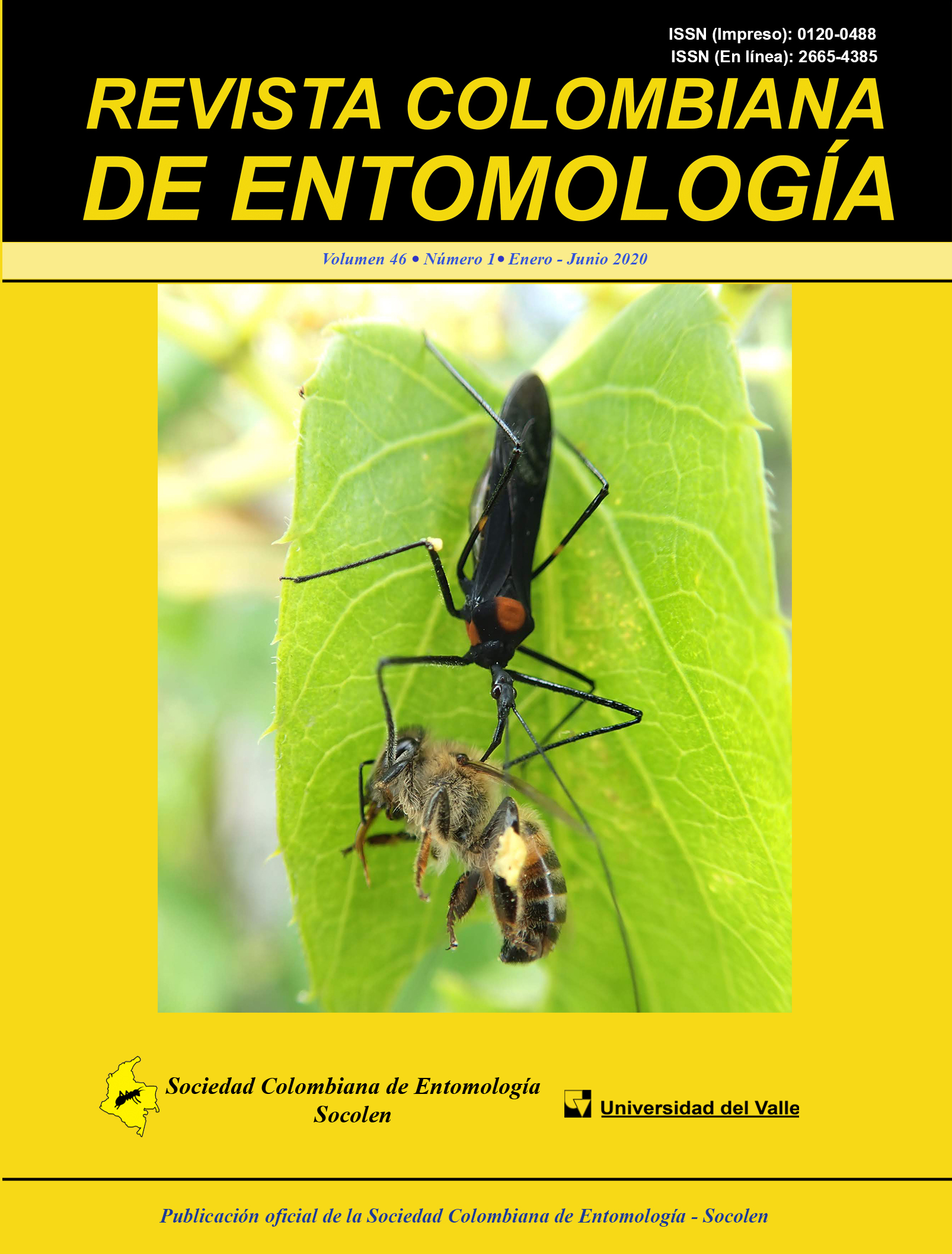Vertical transmission of dengue virus in Aedes spp. (Diptera: Culicidae) in Medellín, Colombia
Keywords:
Public health, Aedes aegypti, Natural infection, Transovarial transmission, Virological surveillanceMain Article Content
Dengue is the world’s most important arbovirus. It is transmitted by the bite of females Aedes spp. mosquitoes, which normally become infected by biting a viraemic host. There are, however, numerous studies that have identified vertical transmission as a rare yet important mechanism of vector infection. This study was conducted in order to quantify the occurrence of vertical transmission of dengue virus in Aedes mosquitoes collected by the Secretary of Health in Medellin, Colombia in 2016 (epidemic year) and 2017 (endemic year). Specimens were identified to species and tested for dengue in pools by RT-PCR. A total of 6,708 mosquitoes were collected; 96 % were Ae. aegypti, and 4 % were Ae. Albopictus. 294 of 2,211 pools tested were positive for dengue virus, and 50 of the positive pools were exclusively male mosquitoes. For both epidemic and the endemic years, vertical transmission was detected, though it was more frequent in 2016. Vertical transmission was observed in mosquitoes collected from all sectors of the city, without a distinct spatial pattern. Our results suggest that vertical transmission is a more frequent event with greater epidemiological relevance than previously estimated. Additional studies are required to verify the infectivity of the virus detected in male mosquitoes and to specify the role of vertical transmission in the incidence of dengue virus.
Downloads

This work is licensed under a Creative Commons Attribution-NonCommercial-ShareAlike 4.0 International License.
Authors retain the copyright on their work and are responsible for the ideas expressed in them. Once a manuscript is approved for publication, authors are asked for a publication license for the term of legal protection, for all territories that allows the use, dissemination and disclosure of the same.

